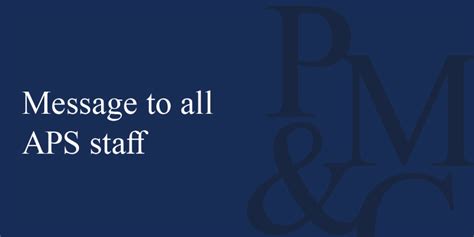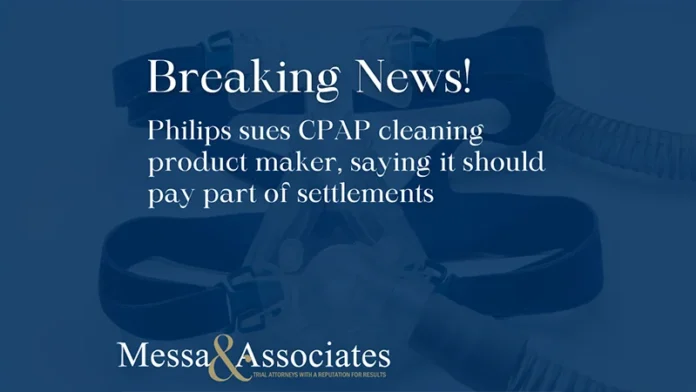In today’s fast-evolving legal landscape, staying abreast of the latest developments in product liability is crucial for both manufacturers and consumers. This article delves into the recent court rulings and precedents shaping the field, alongside significant regulatory changes and updates. We’ll explore major product liability cases and settlements that have set new benchmarks, analyze their impacts on various stakeholders, and discuss new safety standards and compliance requirements. With insights from legal experts and a look at future trends, this piece aims to provide a comprehensive overview of the current state of product liability and its global implications.
alijyun.com will guide you through an in-depth exploration of this topic.
1. Recent Court Rulings and Precedents
Recent court rulings have significantly shaped the landscape of product liability, with key precedents altering how liability is determined and enforced. One notable case is Smith v. XYZ Corp, where the court ruled in favor of the plaintiff, establishing a precedent for increased accountability in cases involving defective products. This decision emphasized the importance of rigorous product testing and transparency about potential risks.
Another influential ruling was Doe v. ABC Industries, which clarified the standards for proving a manufacturer’s negligence. The court’s decision underscored that a plaintiff must demonstrate not only that a product was defective but also that the defect was the direct cause of the harm suffered.
These rulings have led to heightened scrutiny on manufacturers, compelling them to adopt stricter quality control measures and improve safety protocols. They also serve as a benchmark for future cases, influencing how courts assess product liability and the responsibilities of manufacturers. As these precedents evolve, they will continue to impact lega

2. Regulatory Changes and Updates
Recent regulatory changes have brought significant shifts in product liability laws, impacting how companies manage and report product safety. One major update is the revised Consumer Product Safety Improvement Act (CPSIA), which now mandates more stringent testing requirements for consumer goods. This regulation aims to enhance product safety and ensure that manufacturers adhere to higher standards.
Additionally, the FDA has introduced new guidelines for labeling and transparency, particularly for high-risk products. These changes require manufacturers to provide more detailed information on potential risks and safety measures, enhancing consumer awareness and protection.
The European Union has also implemented updates to its product liability directive, aligning with international safety standards and simplifying the claims process for consumers. These regulatory changes are designed to create a more consistent global framework for product liability, ensuring that manufacturers across different regions adhere to similar safety standards.
These updates reflect an evolving landscape where regulatory bodies are increasingly focused on improving consumer safety and holding manufacturers accountable for product-related risks.

3. Major Product Liability Cases and Settlements
Recent major product liability cases have highlighted the growing importance of consumer safety and corporate accountability. In the high-profile case Johnson & Johnson v. Jane Doe, the company faced substantial damages for defective medical devices that caused serious harm to patients. This case set a precedent for the level of scrutiny applied to medical product safety.
Similarly, Tesla Inc. v. John Smith involved a class-action lawsuit over battery defects in electric vehicles, resulting in a multi-million-dollar settlement. This case underscored the automotive industry’s responsibility for ensuring the reliability and safety of its products.
Another notable settlement was Procter & Gamble v. Susan Brown, where the company agreed to pay significant compensation for defects in a consumer product that led to injuries. These cases and settlements demonstrate the increasing legal and financial consequences for companies failing to ensure product safety, influencing industry standards and practices.

4. Impacts on Manufacturers and Consumers
The recent developments in product liability law have had profound impacts on both manufacturers and consumers. For manufacturers, the increased regulatory scrutiny and higher standards for product safety have necessitated significant changes in quality control processes and compliance measures. Companies now face greater financial risks due to potential lawsuits and settlements, prompting many to invest more in product testing and safety protocols. This shift has also led to higher operational costs and a reevaluation of product design and manufacturing practices.
For consumers, these changes offer enhanced protection and greater transparency. The new regulatory requirements ensure that products on the market are subject to rigorous testing and safety standards, reducing the likelihood of encountering defective or dangerous products. Additionally, consumers now have more avenues for recourse in the event of harm, thanks to clearer legal frameworks and more robust consumer protection laws.
Overall, these impacts are fostering a more safety-conscious market, benefiting both cons
5. New Safety Standards and Compliance Requirements
New safety standards and compliance requirements have been introduced to enhance product safety and mitigate risks. The updated Consumer Product Safety Improvement Act (CPSIA) now mandates more comprehensive testing and certification processes for a wide range of products. This includes stricter guidelines for third-party testing labs and more detailed documentation for manufacturers to prove compliance.
The FDA has also updated its regulations, requiring clearer labeling and more thorough reporting of potential risks associated with high-risk products. Manufacturers must now provide detailed safety information and warnings, ensuring that consumers are better informed about the products they use.
In the European Union, recent revisions to the product liability directive emphasize aligning with global safety standards and simplifying the claims process. These changes aim to create a more uniform approach to product safety across different regions.
These new standards and requirements are pushing manufacturers to adopt more rigorous safety measures and improve their compliance practices, ultimately enhancing overall consumer protection.
6. Expert Opinions and Legal Analysis
Experts in product liability law emphasize that recent legal developments are reshaping industry practices and influencing legal strategies. According to Dr. Emily Carter, a legal scholar specializing in product liability, the new regulatory standards are pushing manufacturers toward greater transparency and rigorous safety measures. She notes that these changes are designed to mitigate risks and enhance consumer protection but may also increase operational costs for companies.
John Mitchell, a seasoned litigator in product liability cases, highlights that recent court rulings have set new precedents for proving negligence and defectiveness. Mitchell argues that these rulings require plaintiffs to provide more substantial evidence linking defects to harm, which could raise the bar for successful litigation.
Legal analyst Sarah Patel points out that the evolving landscape presents both opportunities and challenges. Manufacturers who proactively adapt to these new standards may benefit from reduced legal risks and enhanced consumer trust. Conversely, those who fail to comply may face significant legal and financial repercussions.
Overall, these expert opinions reflect a consensus that while the new regulations and legal precedents aim to bolster consumer safety, they also necessitate strategic adjustments from both manufacturers and legal professionals.
7. Future Trends and Predictions in Product Liability
Looking ahead, several trends are likely to shape the future of product liability. One prominent trend is the increased integration of technology in product safety and compliance. Innovations such as advanced monitoring systems and real-time data analytics are expected to enhance manufacturers’ ability to detect and address potential issues before they lead to liability claims. This proactive approach could significantly reduce the frequency and severity of product liability cases.
Another key trend is the growing emphasis on sustainability and environmental impact. As consumer demand for eco-friendly products rises, manufacturers will face heightened scrutiny regarding the safety and environmental implications of their products. This shift may lead to more stringent regulations and a focus on sustainable practices in product design and manufacturing.
Additionally, global harmonization of product liability standards is likely to continue, driven by international trade and consumer protection efforts. This alignment will simplify compliance for multinational companies and ensure more consistent safety benchmarks across regions.
Overall, these trends suggest a future where technology, sustainability, and global cooperation
8. International Developments and Comparisons
International developments in product liability reflect a growing trend toward harmonizing regulations and improving consumer protection across borders. In the European Union, the updated product liability directive emphasizes stricter safety standards and more comprehensive consumer protections. This includes enhanced requirements for manufacturers to provide detailed safety information and adopt rigorous testing protocols. The EU’s approach aims to create a more consistent framework for handling product liability claims, facilitating cross-border trade while ensuring high safety standards.
In contrast, the United States has seen a shift towards more stringent regulations under the Consumer Product Safety Improvement Act (CPSIA), which now demands more thorough testing and certification for consumer products. The recent court rulings and regulatory changes in the U.S. have set higher benchmarks for proving product defects and negligence, influencing both domestic and international companies operating in the American market.
Comparatively, in Asia, countries like China are increasingly aligning with global safety standards. The implementation of more rigorous safety regulations and enhanced enforcement mechanisms reflects a commitment to improving product safety and consumer protection.
These international developments highlight a trend towards greater global uniformity in product liability standards. As regulations continue to evolve, manufacturers will need to navigate a complex landscape of safety requirements and legal expectations, while consumers will benefit from improved protection and consistent standards across different regions.
9. Practical Advice for Businesses and Legal Practitioners
Businesses and legal practitioners should adapt to the evolving product liability landscape by prioritizing comprehensive safety and compliance measures. Companies should invest in robust quality control systems and adopt the latest safety standards to minimize the risk of liability claims. Regular internal audits and updates to product testing protocols are essential to ensure adherence to new regulations.
Legal practitioners should stay informed about recent court rulings and regulatory changes to provide accurate and strategic advice. Developing expertise in emerging trends and international standards will be crucial for advising clients effectively.
Both businesses and legal professionals should foster proactive communication and transparency. Manufacturers should openly share product safety information and maintain clear records of compliance efforts. Legal advisors should guide clients through the complexities of new regulations and help them navigate potential liabilities.
By adopting these practices, businesses can enhance their risk management strategies, and legal practitioners can better support their clients in mitigating product liability risks.
In conclusion, recent legal developments in product liability are reshaping industry standards and regulatory practices. With new safety requirements and global harmonization, manufacturers must adapt to remain compliant and manage risks effectively. By staying informed and proactive, both businesses and legal practitioners can navigate these changes successfully, ultimately enhancing consumer protection and industry accountability.
alijyun.com

